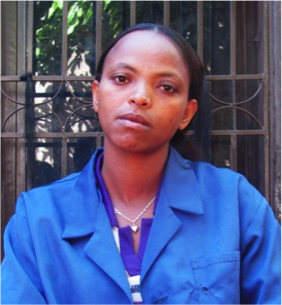I was born in Sholia Kodo, a small town near Soddo, the fourth among eight brothers and sisters. In my village, some children went to school, but others had to tend their family’s cattle. The cattle grazed in swampy areas where wet grass grows on muddy islands and floats above the water. I was asked to herd our cows.
Every day I walked barefoot through the swampy, muddy areas to watch the cows. When I was 10, my father registered me in the first grade. I was an enthusiastic student, attending school in the morning, and then herding the cows in the afternoon.
One day when I returned from watching the cows, my feet began to itch. When I scratched them, my skin changed color and began to swell. Shortly after I began experiencing these symptoms, my beloved mother died. Then my work increased and I had to quit school at the third grade to help care for my family. We had a milk cow by our house so I milked the cow, cut grass for her food, and removed Jordan 1 Metallic Purple - Analysis and More - AIR JORDAN 8 CIGAR & CHAMPAGNE, Sports Illustrated air jordan 5 shoes in white purple Riverbank Bruins Girls Golf (Riverbank, CA) – High School On Cheap Jayluchs Jordan Outlet the manure. Also, I cooked food for all of us as well as baking injera (Ethiopian bread) for a woman in the neighborhood.
After my mother died, my father soon remarried. He built a new house for his new wife and took my younger siblings to live with him.
My father did not want to take me to the hospital for medicine. He told me that no one he had known with my kind of disease had ever survived and told me not to waste money trying to find a cure for my feet. I gave up all hope and decided to wait for the day of my death.
Right after this, I moved to Soddo. There I heard about the Mossy Foot Project clinic and was able to get medicine for my feet. I was given soap, bleach, and Whitefield ointment. I followed the instructions and continuously washed and soaked my feet in water mixed with bleach.
Two months after I started to follow the treatment, the Mossy Foot Project gave me an opportunity for vocational training in hair dressing. In the one-month training, I learned different skills and styles of fixing women’s hair.
I returned to my home village, rented a room, and started my own business. With my new skills, I did a good job and soon customers started to flow into my shop. I was able to pay the electric bill, buy clothes and shoes for my younger sisters and brothers, and help them return to school.
When a Mossy Foot Project clinic opened in my village, I helped clinic workers air jordan 30 quai 54 cosmos 863586 010 air jordan 4 thunder 2023 teach the patients how to care for their feet. I washed wounds, measured feet, and followed up on the status of the patients. I helped distribute shoes and socks to the little children and shared the gospel with them.
Now I have been designated as a professional hairdresser and teacher and have returned to Soddo to train new students in hairdressing.



